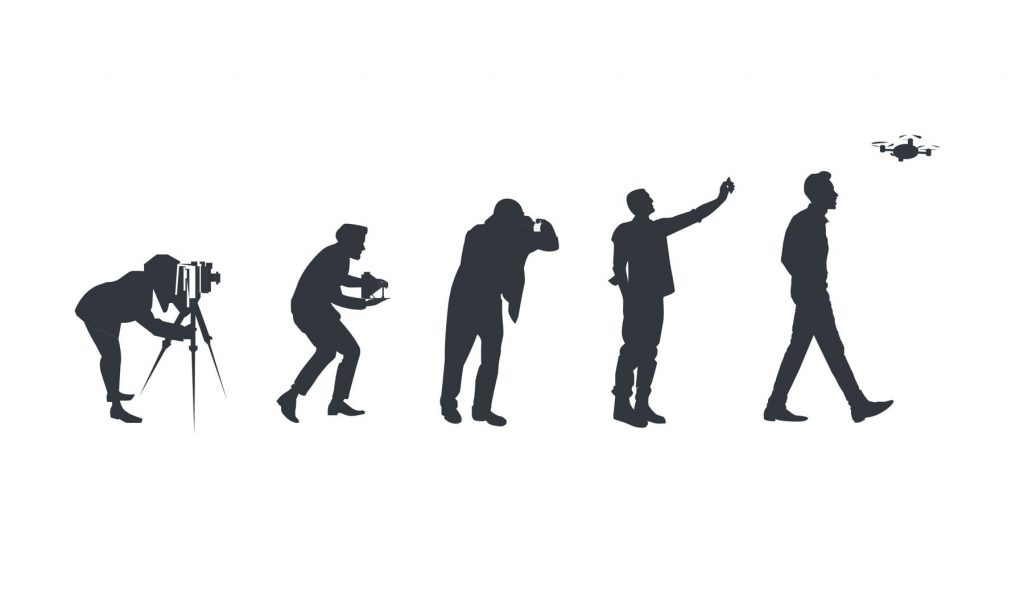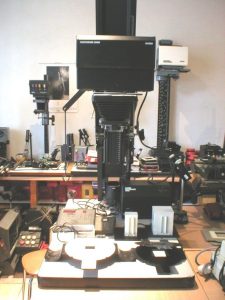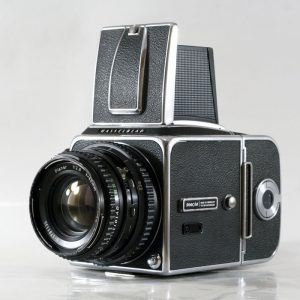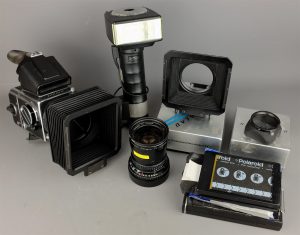How portrait photography evolved through my 25-year career

My Beginning
Things have certainty changed for the better! I’ve been a professional portrait photographer since 1993. I started out working for Americana Portraits. They were the go-to baby photographers that went to the client’s home. It was unusual for a photographer’s business model to be set up this way. The photographers at Americana Portraits would go to homes all throughout New Jersey, from the wealthiest to the poorest neighborhoods. If you stayed around long enough you would get to the better neighborhoods and had a chance to make a couple of bucks. They bought the baby name list from the hospitals; our subjects were mostly babies that were three months old and up. The baby portraits were done well for that time. There was a system and the system worked. However, this blog post will be mostly about the technical aspects of how things have changed during my career. The photography industry went a lot of years without much change. Then it changed rapidly. It seems like yesterday that photographers were on photography forums debating whether digital was here to stay. Fascinating that this was even a debate at all. I sold my expensive film cameras just in time, while I still was able to get a decent amount of money for them. A lot of the photographers that I knew thought I was making a big mistake. If I would have waited another year the cameras would have been nearly worthless.
The Darkroom

Let’s start with the darkroom which is what I miss the most. However, even with a magic wand I wouldn’t want to go back to these days permanently. Don’t get me wrong, there was always something magical about exposing the black and white paper with the enlarger and putting it into the developer. From there, the image would slowly start to appear. It never got old and I can still smell the chemicals. The developer, the stop-bath that smelled like vinegar, and of course the fixer. As I got more skilled in the darkroom I would use different techniques. For instance, I would under expose and over developing with the film developer. I was fortunate having a darkroom in my basement growing up. Spending my whole day in my darkroom wasn’t unusual. Rainy days were my favorite time to be in my darkroom. Printing was something I felt I was better than most at even at a young age. Having a darkroom growing up helped. However, as much fun as it was, and there was nothing like it, you can now get better prints with wider range of tones with more paper options with a 300-dollar printer. Not only that, I’m not sure how healthy it was putting my hands in the darkroom chemicals and to breath in those toxic fumes.
Loading the Film for Developing
Loading film on the reel was always a nervous task for some. The black and white film needed to be rolled on a stainless steel reel so it could be developed. The film could easily be ruined if this wasn’t done properly. There were a lot of ways to ruin the film. I am surprised it didn’t happen to me more often. The video below will show you how it was done, keep in mind this had to be accomplished in complete darkness, Some photographers preferred to do this in a light proof bag. The preferred way for those who didn’t have a darkroom. After rolling the film on the reel it then went into light proof stainless steel container. From there you were able to turn on the lights and add the chemicals. The guy below is struggling even with doing it in a well lit room. It’s faster and easier putting the card into the card reader and downloading them onto your computer. Even that is getting to be old school.
The Cameras
The cameras changed the most. Some professionals may disagree, in my opinion cameras after the 1000-dollar range are as good as the cameras in the 3000-dollar range as far as portrait photography is concerned. Assuming the lens being equal. A wedding photographer, who is taking a lot of low light images and action shots will feel differently. At the start of my portrait career you couldn’t see the image until up to a week later. Hard to believe if you have never experienced this. As a result, if you wanted to be a professional photographer you had to be technically sound. With both the camera and your lighting. There was little room for error. These days, if you are shooting in the RAW format you can be 200 percent off and still get a decent image. The digital world has saved me more times than I like to admit. It’s awesome. This has opened the door for more photographers to enter the field. The weight of the camera is also something that changed the scope of portrait and wedding photography for the better. I will discuss that below in more detail. Few would argue that the quality of digital is far better than that of film. There are always the few die-hards out there, however they are fun to talk to and I let them talk. Surprisingly, there are some young photographers that are all about the film. They are especially fun to talk to.
as the cameras in the 3000-dollar range as far as portrait photography is concerned. Assuming the lens being equal. A wedding photographer, who is taking a lot of low light images and action shots will feel differently. At the start of my portrait career you couldn’t see the image until up to a week later. Hard to believe if you have never experienced this. As a result, if you wanted to be a professional photographer you had to be technically sound. With both the camera and your lighting. There was little room for error. These days, if you are shooting in the RAW format you can be 200 percent off and still get a decent image. The digital world has saved me more times than I like to admit. It’s awesome. This has opened the door for more photographers to enter the field. The weight of the camera is also something that changed the scope of portrait and wedding photography for the better. I will discuss that below in more detail. Few would argue that the quality of digital is far better than that of film. There are always the few die-hards out there, however they are fun to talk to and I let them talk. Surprisingly, there are some young photographers that are all about the film. They are especially fun to talk to.
The Cost
The cost of a professional grade camera has drop dramatically. My first camera set up was a used Hasselblad, the same set up as the below picture but with a portrait lens and it was over 6-thousand dollars. That was a lot of scratch for a 25-year-old in the mid-90s. These days you can get by with a one camera set up (not that I recommend this) for under a thousand dollars. It was also costly to learn. You had to pay to get the negatives and proofs printed to see what you did. This was part of the cost that added up quickly. These days you take a picture and you see the results instantly. Aspiring photographers used to have to document what they did and when they got the proofs back they would match their notes to the proof numbers to see what they did right and wrong. The learning process was longer and costly. You would often have to pay for seminars to learn different techniques since there wasn’t any YouTube videos or Google to get this information for free.
Lighting
Lighting hasn’t changed all that much, although there are more options with continues lighting as opposed to the strobe (flash) that most photographers use these days. These days there is a new kind of photographer that calls themselves “available light” photographers. This essentially means, to the best of my knowledge, that they don’t use any type of extra lighting except for what’s there. For instance, if you were to hire an available light photographer for your headshot they would most likely put you next to a window and use some type of reflector to spread out the light. This is great if it’s a nice sunny day but what happens if it’s when it’s dark outside? I am not knocking these photographers, many are very talented. One of the reasons for this is because in the “old days” aspiring photographers like myself had to get a job with a studio (for the most part) to learn the craft. Since there wasn’t as much trial and error because we couldn’t see the images until well after we took them. We had to be more technically sound. With that we were forced to understand our craft more before we went out on our own. As a result, most of my generation were trained by seasoned portrait photographers. These days, there aren’t a lot of photographers to learn from unless you take a seminar. The brick and mortar studios are mostly gone. There are few photographers that are willing to deal with employees, high rent, and the rest of the responsibilities that go with it. When I started out I was trained (not always in a formal manor) every single day with lighting, posing, and marketing.
As a Result
As a result, a few things happened. The digital world has created some of the most talented portrait photographers and many that shouldn’t be doing it professionaly . It has created more options for the consumer, however it has become harder for the consumer to find a photographer that both fits their budget and expectations. The greatest thing that has happened is this industry is that it opened up to women. One of the reasons for this is because the cameras are more compact and lighter. I’m a big guy, 6’6” 210 lbs. and my arms were tired by the end of a busy day with the heavy medium format cameras such as a Hasselblad, Mamiya, and Bronica. On top of that, (literally) was a massive heavy flash, battery pack, and so on! Look at the picture and you’ll get a better understanding of this.
. It has created more options for the consumer, however it has become harder for the consumer to find a photographer that both fits their budget and expectations. The greatest thing that has happened is this industry is that it opened up to women. One of the reasons for this is because the cameras are more compact and lighter. I’m a big guy, 6’6” 210 lbs. and my arms were tired by the end of a busy day with the heavy medium format cameras such as a Hasselblad, Mamiya, and Bronica. On top of that, (literally) was a massive heavy flash, battery pack, and so on! Look at the picture and you’ll get a better understanding of this.
Pros and Cons
There are plenty of pros and cons with the changes over the last twenty years. Thankfully, there are more pros than cons. One of the cons for photographers is that the market has become saturated, however this has happened in a lot of industries. It’s much easier to get in front of your target market which is great. It also forces a photographer, if they want to make a living doing this, to stay on top of their game both photographically, with their marketing, and with the relationships they have with their clients. In my opinion, there hasn’t ever been a better time to become a professional portrait photographer.
The shutter sound from a Hasselblad 500cs. There was truly nothing like it. It’s hard to explain. Skip to the 30 second point.
